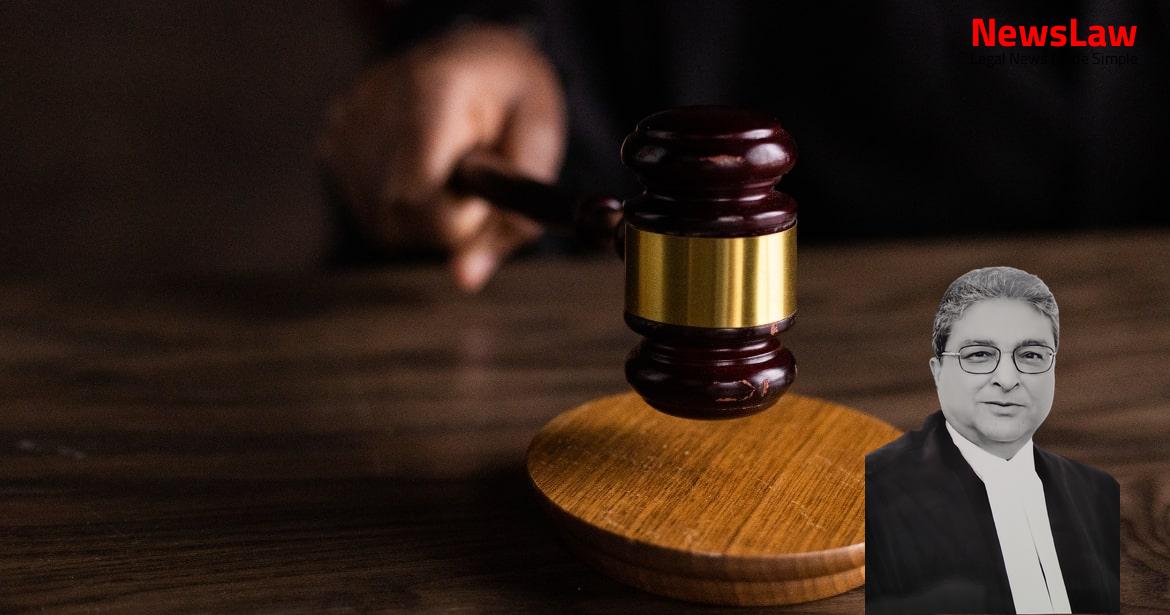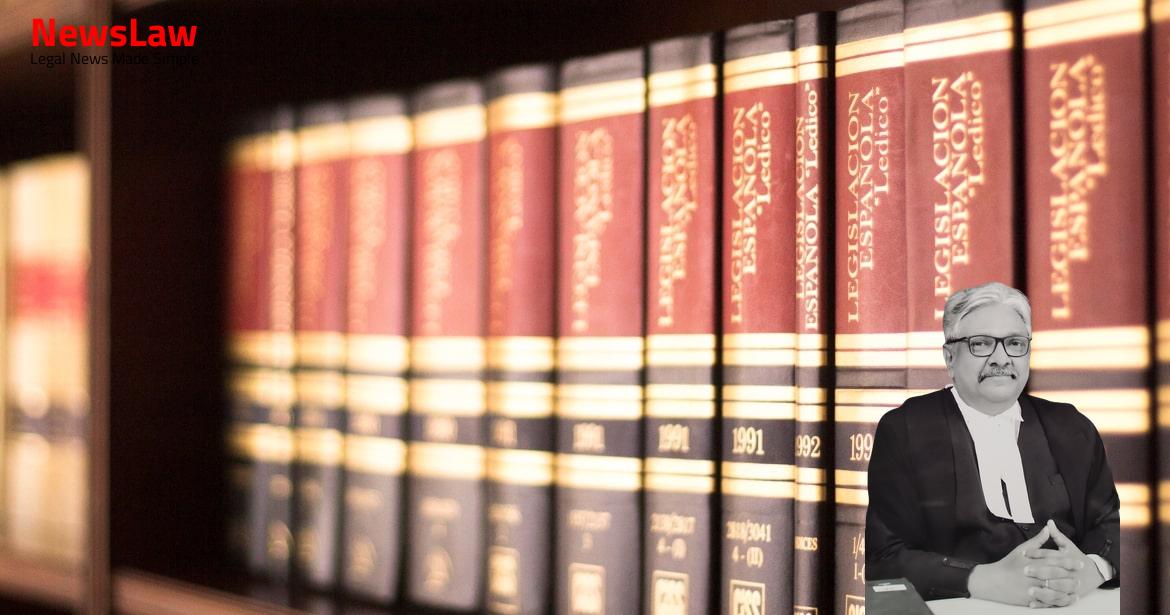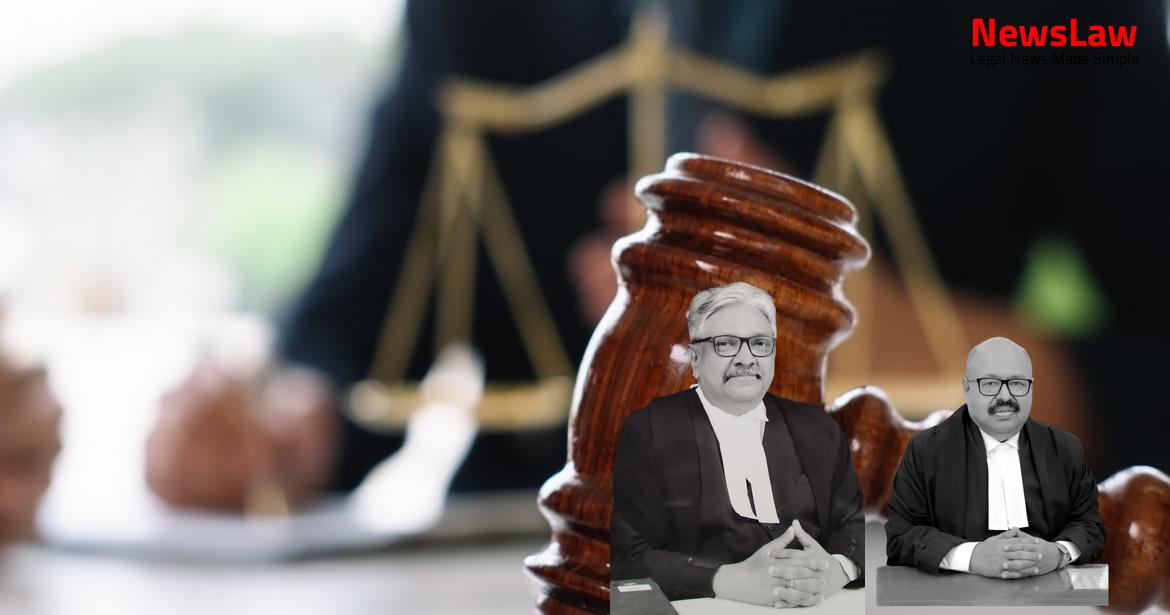The legal dispute between Shree Ram Urban Infrastructure Ltd. and Corporation has been a matter of significant contention in the construction and real estate sector. The Supreme Court’s recent judgment sheds light on the complexities of urban infrastructure development and regulatory frameworks. Stay tuned for a detailed analysis of this crucial case.
Facts
- Shree Ram Urban Infrastructure Ltd. filed an appeal challenging the judgment and order dated 22/25/27.1.2016
- The first appeal was filed against the declaration of the stop-work notice as illegal
- Certain clauses of the Commissioner’s order dated 12.9.2013 were set aside by the High Court
- The Corporation had issued a commencement certificate up to the 43 floor, but SRUIL constructed 13 upper floors beyond that
- A stop-work notice was issued by the Corporation, but later withdrawn
- Various notices were issued to SRUIL regarding the building construction, including commencement certificate revocation
- The court considered the FSI related issues, service floors, refuge area, and duplex floors in the construction
- The Corporation’s circular limited the construction to two basements, ground, and four upper floors
- Multiple appeals and petitions were filed by SRUIL and Janhit Manch challenging various aspects of the construction
- An injunction was granted restraining the Corporation from acting on certain notices
- SRUIL applied for a commencement certificate for construction above the plinth level under Regulation 6(4) of the DCR
- Various clauses of the Commissioner’s order were set aside, and a new proposal for commencement certificate submission was directed
- The High Court held that the construction of the PPL above the plinth level and the construction of floors above the 43rd floor of the main building is illegal as it was done without obtaining commencement certificates.
- SRUIL may apply for regularization of the construction made of the PPL above the plinth and the construction of upper floors of the main building.
- The Commissioner directed to pass an order within four months regarding the PPL construction and upper floors of the main building.
- The Corporation cannot file a belated appeal after accepting the verdict of the trial court and the High Court, as per the order dated 12.9.2013.
- Municipal Commissioner’s order concerning refuge area was passed on 31.8.2016, and Corporation’s order revoking or modifying permission under section 51 of the MRTP Act issued on 10.11.2016.
- Construction cost of about Rs.165 crores incurred in the PPL, with Rs.70.28 crores spent on construction up to plinth.
- The judgment of the High Court in PIL No.43/2012 and the decree of the city civil court in Suit No.2942 of 2013 accepted by the Corporation.
- The construction above plinth level was deemed legal and valid, but the construction of the PPL above the 4th floor was considered against the government circular of 22.6.2011 restricting buildings to a maximum of 4 upper floors.
- The decision in Kohinoor CTNL Infrastructure Co, Pvt. Ltd. & Anr. v. The MCGM & Ors. (2013) 3 BCR 410 was referenced regarding public parking lot construction progress.
- The High Court held that the construction of PPL could not be deemed illegal, allowing SRUIL to claim incentive FSI for the residential building.
- Various aspects to be reviewed by the Commissioner/Corporation at the time of issuance of an occupation certificate including excessive FSI granted for refuge area and re-evaluation of FSI for different areas.
- The Commissioner’s decision to permit a specific height for service floors was upheld, and SRUIL to be given a chance to provide input before final decisions are made.
Also Read: Supreme Court Ruling on Exemption of Excise Duties and Cess
Arguments
- The argument raised by Janhit Manch that the commencement certificate for further construction beyond the plinth is invalid is being contested.
- SRUIL is challenging the contention that there was no deemed commencement permission for construction above the plinth.
- The Corporation’s admission of receiving the letter dated 7.5.2011 but failing to reply is highlighted to support the validity of the deemed permission.
- The High Court’s findings regarding the irregular construction of floors 1 to 15 of the PPL are being disputed by SRUIL.
- Janhit Manch’s challenge to the regularisation order based on DCR 33(24) as amended in 2014 is being refuted.
- The Corporation’s assertion that the Circular dated 22.6.2011 and the directives would not be enforced due to statutory regulation is emphasized.
- SRUIL is arguing that the non-endorsement of the commencement certificate from floors 44 to 56 is an irregularity and not a breach of Development Control Regulations or statute.
- The adherence to section 51 of the MRTP Act and the regulations on commencement certificates is asserted to support the legality of the construction.
- Janhit Manch’s delayed filing of the petition, lack of evidence on the prescribed form of the architect’s letter, and unchallenged completion of PPL construction are points of rebuttal by SRUIL.
- The applicability of laws at the time of permission and construction rather than subsequent amendments is emphasized to support SRUIL’s position.
- The challenge by Janhit Manch against the regularisation of floors above the fourth floor is being opposed based on precedents.
- SRUIL’s stance on the validity of the construction in accordance with sanctioned plans and previous legal judgments is reiterated.
- The procedural irregularity of non-endorsement on the commencement certificate is argued as regularizable under MRTP Act provisions.
- The Corporation’s issuance of Circulars outlining modes of regularisation is cited to support SRUIL’s argument for the validity of the construction without new development permission.
- Shri A.N.S. Nadkarni, learned Additional Solicitor General, represented the Corporation.
- The Commissioner has compounded the PPL as per the High Court order, stating it serves public interest by providing parking for 900 cars.
- SRUIL received notice of disapproval under section 346 of the MMC Act for a commercial building project, which cost Rs.165 crores and was fined by the Corporation.
- SRUIL argues that Janhit Manch has no right to challenge the judgement and that no public interest is served by the petitions.
- Janhit Manch contends that permissions under the MRTP Act expire after 4 years and raises concerns about access to refuge areas in case of emergencies.
- The order dated 10.11.2016 by the Additional Municipal Commissioner on the notice under section 51 is deemed illegal.
- Janhit Manch has filed writ applications and Transfer Cases in public interest, pointing out inconsistencies in the Corporation’s stand.
- The Municipal Commissioner’s order of 31.8.2016 on refuge areas is deemed illegal by Janhit Manch for being against the High Court judgment and NBC provisions.
Also Read: Protection of Wildlife Sanctuary: Importance of Environmental Conservation
Analysis
- The Court has examined the validity of the notice dated 7.5.2011 served by Architect of SRUIL, which was not challenged by the Corporation in the civil suit.
- Deemed permission under DCR 6(4) came into play on the expiry of 15 days from the notice, as admitted by the Corporation witness.
- The Corporation did not deny receiving the notice dated 7.5.2011, and the Architect’s statement in the notice fulfilled the requirements of notice under Form XVI.
- The completion of construction was as per the sanctioned plan, and the Corporation failed to inspect the construction within 15 days from the notice.
- Various amendments, circulars, and regulations have been considered in the analysis of the construction process.
- The High Court’s findings on the construction, permission lapses, and completion of work up to plinth level have been discussed in detail.
- The Corporation’s admissions and internal reports were central to determining the validity of the construction work.
- The importance of the Architect’s statement regarding completion of work up to the plinth level in the notice is highlighted.
- The legal implications of the notice, deemed permission, and subsequent actions taken by the Corporation have been scrutinized in the analysis.
- The aspect of substantial compliance, legal formalities in notices, and adherence to regulations have been emphasized in the Court’s examination.
- Permission for development or deemed permission remains valid for 1 year from the date of grant.
- If not utilized within 1 year, the permission lapses.
- Consequent order of the Corporation is disregarded due to a chequered history of the litigation.
- The court examined the matter on merits despite not being satisfied with the bona fides of the PIL.
- The litigation has gone through several rounds.
Also Read: Improvements and Rehabilitation at Shree Jagannath Temple: Supreme Court Judgement
Decision
- The permission for development issued under section 45 has not lapsed.
- The order dated 31.8.2016 passed by the Municipal Commissioner regarding the refuge area is upheld.
- Petitions filed by Janhit Manch – PIL [L] No.133/2015, T.C. No.271/2017 and T.C. No.6/2018 are dismissed.
- The Corporation is directed to take over PPL and decide concerning 13 floors, i.e., 44 to 56 floors of the residential building within one month.
- The High Court’s order and finding regarding no deeming permission accrued under Regulation 6(4) of Development Control Regulations, 1991 are set aside.
- Deemed permission accrued and no interference is required concerning the determination of refuge area as per the order dated 31.8.2016 passed by the Municipal Commissioner.
Case Title: SHREE RAM URBAN INFRASTRUCTURE LTD. Vs. STATE OF MAHARASHTRA .
Case Number: C.A. No.-008265-008266 / 2019



